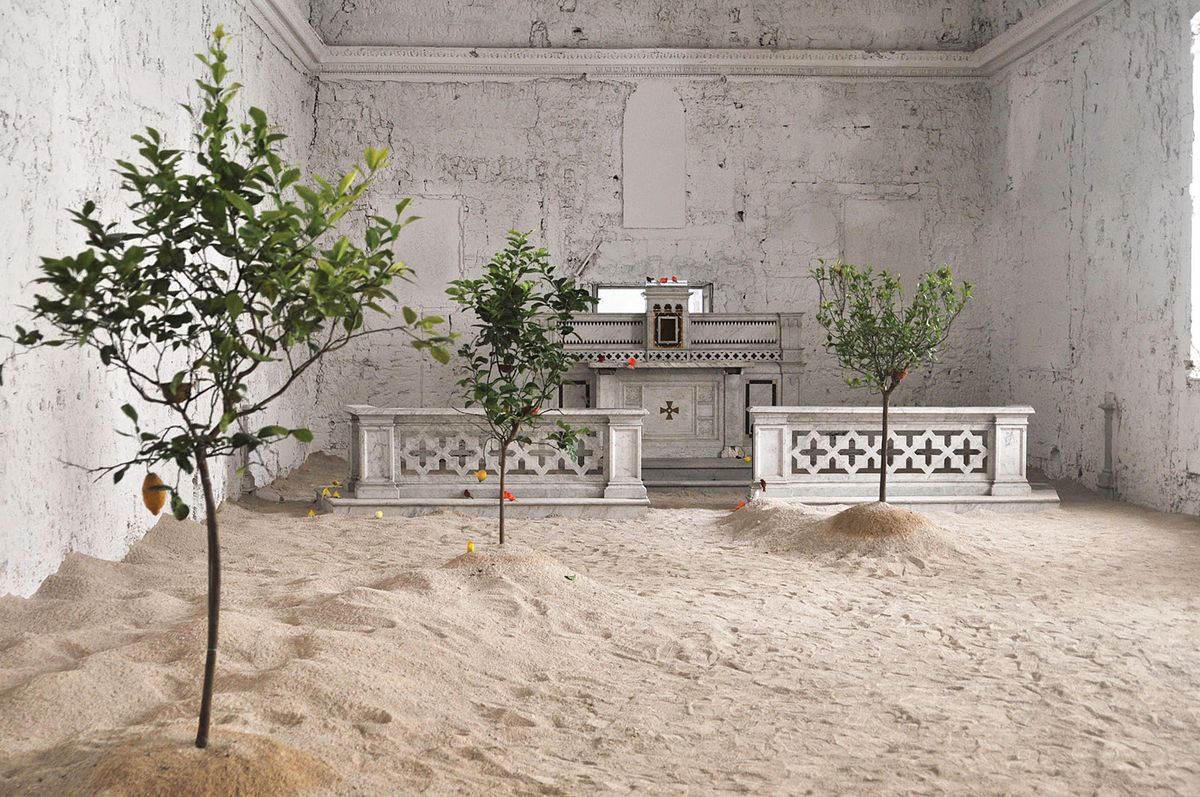With an area of nearly 2,000 sq. m, the Italian pavilion at the Venice Biennale is not an easy space to fill. Yet for the first time ever, the country has appointed a single artist to fill the large area in the Venice Arsenale. Gian Maria Tosatti is known for his ambitious site-specific installations with projects, often spanning years, in deconsecrated churches, deserted hotels and multiple buildings scattered across entire cities. For the Biennale, he has reconstructed a series of warehouses inside the pavilion, forming an immersive exploration of the rise and fall of industrial Italy as a metaphor for humans’ relationship with nature.
Tosatti’s starting point is the “Italian Miracle”, the years of rapid economic development that followed the Second World War, before stagflation in the 1970s and then the recession of 2008-09 triggered perilous economic decline. Now the debt-laden country is once again readying itself for economic transformation, as the government prepares to spend €191.5bn of Covid recovery funds.
It is difficult not to read Tosatti’s exhibition as a response to this historical crossroads. The exhibition is split into two sections. In the first (History of the Night), visitors wander through five reconstructed warehouses littered with tools, disused machinery and tables. The rusty spaces, lit with LEDs imitating natural light, will become progressively darker, before visitors emerge in the exhibition’s dimly-lit second section (Destiny of Comets) evoking the “power and generosity” of nature and “its love for mankind”. Tosatti promises the experience will be “intense” and “epiphanic”. The Giardino delle Vergini next to the exhibition space has been set aside as a space where visitors can “decompress”.
The Italian pavilion doesn’t have an identity—it is an empty shell—so you need to start from scratchGian Maria Tosatti
Currently based in Naples, Tosatti has explored big social issues in the past, including the ghettoisation of immigrants, the substandard living conditions of the most marginalised in the West, and the impoverishment of Istanbul’s historic neighbourhoods by gentrification. If the Biennale project has been a challenge, then it is less for the pavilion’s size than for its neutral character. “I usually choose the spaces I work in for their individual qualities, but obviously that is not possible here,” Tosatti says. “The Italian pavilion doesn’t have an identity—it is an empty shell—so you need to start from scratch.”
Instead of the building, Tosatti and Eugenio Viola, the curator for the pavilion, have drawn inspiration from the outside world, scouring Italy in search of abandoned factories. Visiting locations stretching from Catania in Sicily to Trento near Italy’s Austrian border, they got to know families whose firms had collapsed, and were struck by the homogeneity of the county’s urban sprawl. They purchased parts of the warehouses and took them away. Tosatti then reconstructed the buildings, incorporating additional elements made from iron, cement, wood and brick in his studio.
The short flourishing of humankind
A broad range of literary sources, from Pier Paolo Pasolini to Roberto Saviano, the writer of Gomorrah, has provided further inspiration, with the reconstructed warehouses resembling scenes from Ermanno Rea’s La Dismissione (2014), a novel recounting the decommissioning of a factory in Taranto. The comet of the exhibition’s second section, Tosatti says, represents the short flourishing of humankind, like a hurtling body momentarily lighting up the sky. “What is the future for the human race? Do we want to continue moving forwards? How long do we want to keep on going? Are we tired?” These are some of the questions Tosatti wants to spark in the minds of visitors.
Italy
Artist: Gian Maria Tosatti
Organisers: Eugenio Viola; Onofrio Cutaia, Ministero della Cultura
Where: Arsenale


